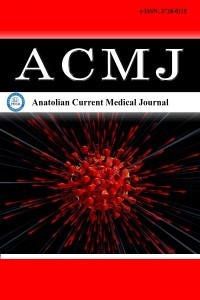1.
Sohn EY, Kato R, Noetzli LJ, et al. Exercise performance inthalassemia major: correlation with cardiac iron burden. Am JHematol. 2013;88(3):193-197.
2.
Origa, R. β-Thalassemia. Genet Med. 2017;19(6):609-619.
3.
Arora M, Chandra J, Suri JC, Narayan S, Dutta AK.Pulmonary function tests in beta thalassemia. Indian J Pediatr.2001;68(3):239-242.
4.
Kanj N, Shamseddine A, Gharzeddine W, et al. Relation offerritin levels to pulmonary function in patients with thalassemiamajor and the acute effects of transfusion. Eur J Haematol.2000;64(6):396-400.
5.
Kazazian Jr HH. The thalassemia syndromes: molecular basis andprenatal diagnosis in 1990. Semin Hematol. 1990;27(3):209-228.
6.
Witzleben CL, Wyatt J. The effect of long survival on the pathologyof thalassaemia major. J Pathol Bacteriol. 1961;82(1):1-12.
7.
Factor JM, Pottipatti SR, Rappoport I, Rosner IK, Lesser ML,Giardina PJ. Pulmonary function abnormalities in thalassemiamajor and the role of iron overload. Am J Respir Crit Care Med.1994;149(6):1570-1574.
8.
Bacalo A, Kivity S, Heno N, Greif Z, Greif J, Topilsky M. Bloodtransfusion and lung function in children with thalassemiamajor. Chest. 1992;101(2):362-365.
9.
Piatti G, Allegra L, Ambrosetti U, Cappellini MD, Turati F, FiorelliG. Beta-thalassemia and pulmonary function. Haematologica.1999;84(9):804-808.
10.
Alyasin S, Moghtaderi M, Amin R, Kashef S, Karimi M. Pulmonaryfunction test in transfusion-dependent β-thalassemia majorpatients: a pilot study. Pediatr Hematol Oncol. 2011;28(4);329-333.
11.
Cappell DF, Hutchison HE, Jowett M. Transfusional siderosis: theeffects of excessive iron deposits on the tissues. J Pathol Bacteriol.1975;74;245-264.
12.
Papanikolaou G, Pantopoulos K. Iron metabolism and toxicity.Toxicol App Pharmacol. 2005;202(2):199-211.
13.
Ooi GC, Khong PL, Lam WK, Trendell-Smith NJ, Tsang KWT.Pulmonary iron overload in thalassemia major presenting assmall airway disease. Acta Haematol. 2002;108(1):43-46.
14.
Bourli E, Dimitriadou M, Economou M, et al. Restrictivepulmonary dysfunction and its predictors in young patients withβ-thalassaemia major. Pediatr Pulmonol. 2012;47(8):801-807.
15.
Eldor A, Rachmilewitz EA. The hypercoagulable state inthalassemia. Blood. 2002;99(1):36-43.
16.
Sumiyoshi A, Thakerngpol K, Sonakul D. Pulmonarymicrothromboemboli in thalassemic cases. Southeast Asian JTrop Med Public Health. 1992;23(Suppl 2):29-31.
17.
Chatterjee R, Bajoria R. Critical appraisal of growth retardationand pubertal disturbances in thalassemia. Ann New York AcadSci. 2010;1202(1);100-114.
18.
Li AM, Chan D, Li CK, Wong E, Chan Y, Fok T. Respiratoryfunction in patients with thalassaemia major: relation with ironoverload. Arch Dis Childhood. 2002;87(4):328-330.
19.
Kanj N, Shamseddine A, Gharzeddine W, et al. Relation offerritin levels to pulmonary function in patients with thalassemiamajor and the acute effects of transfusion. Eur J Haematol.2000;64(6):396-400.
20.
Chan KC, Au CT, Leung AW, et al. Pulmonary function in patientswith transfusion-dependent thalassemia and its associations withiron overload. Scientific Rep. 2023;13(1):3674.

